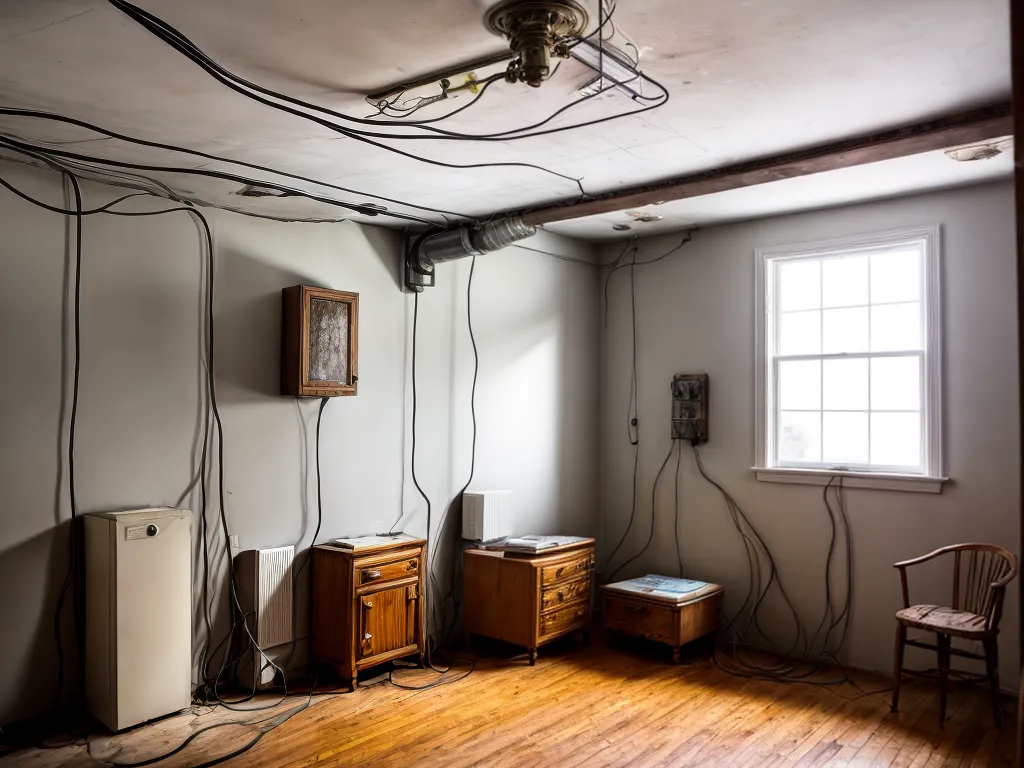
How to Keep Electrical Wiring from Failing in Your 1930s Home
Maintaining the electrical wiring in a 1930s home can be challenging, but taking preventative steps will help avoid failures and keep your vintage home safe. Here are some tips to help keep the electrical system running properly in your 1930s house.
Identify Potential Problem Areas
The electrical wiring in 1930s homes was not designed and installed to the same standards we have today. As wiring ages, the insulation can become brittle and crack, connectors can work loose, and overloads can occur. Be aware of the following potential problem areas in a 1930s home's electrical system:
- Knob and Tube Wiring - This early form of wiring has no ground wire and insulation that degrades over time. It's a fire hazard and should be replaced.
- Cloth-Covered Wiring - This wiring from the 30s-50s also degrades and should be checked or replaced.
- Aluminum Wiring - Used during the 60s and 70s, it's prone to overheating failures. Pigtailing with copper or full rewiring is recommended.
- Unsafe Wiring Practices - Outdated wiring methods like under-rated cables, undersized boxes, and improper grounding can be unsafe.
Knowing the type of wiring your 1930s home contains allows you to monitor it for deficiencies. Consult an electrician if you have concerns.
Inspect Frequently Used Circuits
Focus on inspecting the electrical wiring for frequently used lighting, appliance, and outlet circuits. Check for:
- Loose connections - Turn off power and check for loose plugs and wires. Tighten any loose connections.
- Heat signs - Look for discolored or warm outlets and switches which can indicate overload issues.
- Exposed wires - Damage to insulation can expose live wires, creating a shock hazard.
Monitoring high-use circuits helps detect problems before they lead to electrical failures.
Check the Electrical Panel
The main electrical panel should also be inspected. Signs of trouble include:
- Rust and corrosion - This can cause insulation breakdown and overheating.
- Damage - Cracked covers, damaged wiring, burnt smells, etc indicate problems.
- Overfusing - Circuits shouldn't have higher rated fuses than the wiring can handle. This is a fire risk.
- Double-tapping - More than one wire connected to a breaker can cause overheating.
Consult an electrician immediately if the panel shows any of these warning signs. Replacement may be required.
Consider Rewiring with Modern Wiring
For the highest level of safety, consider rewiring some or all of the electrical system with modern wiring. Though expensive, rewiring with modern cables and safety practices eliminates most aging electrical risks in a 1930s home. Target old, frequently used, or insufficient circuits first.
Use Electrical Safety Devices
While upgrading the wiring is ideal, installing electrical safety devices can also help protect your vintage home:
- GFCIs - Installing ground-fault circuit interrupters protects against shocks. Use them near water sources.
- AFCIs - Arc-fault circuit interrupters prevent fires caused by electrical arcing and should protect bedroom circuits.
- Whole house surge protector - This helps protect equipment from power surges.
Maintain Electrical Components
Practice good maintenance on all electrical equipment:
- Replace old outlets and switches - Upgrade to modern, safer units as needed.
- Check light fixtures - Ensure connections are tight and no wiring is damaged. Clean routinely.
- Inspect extension cords - Use carefully and examine regularly for wear. Replace damaged cords.
- Clean electrical panel - Periodically vacuum dust and dirt out of the panel. Keep area clear.
Proper maintenance helps prevent premature failures of wiring and electrical components.
The vintage electrical wiring in 1930s homes requires diligent inspection, maintenance, and upgrades to keep it safe and operational. Watch for warning signs of trouble, make repairs promptly, and consider rewiring with modern wiring. Taking a proactive approach allows you to keep the electrical system working reliably in your classic 1930s house.